Amphisarca Lists
-
Cantaloupe root knot nematode disease
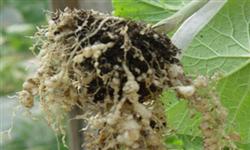
Root-knot nematode disease is an important disease of Hami melon, which occurs and distributes in some areas. It can occur in protected and open fields. The disease is more serious in autumn. Infection in seedling stage has a great impact on production. After the disease, the rate of diseased plants is often more than 60%, which obviously affects the production of Hami melon. The symptoms are mainly harmful to the root system and occur on the main root and lateral root.
2018-09-12 -
Key points of high-yield cultivation techniques of Hami melon
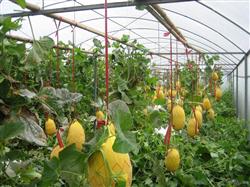
1. Sowing and cultivating strong seedlings at the right time from the end of December to the first ten days of January of the second year, with a seedling age of 30 days. Before sowing, the seeds were disinfected, soaked and germinated. Nutritious soil is selected from soil or paddy soil that has not been planted with melon crops. 2000 kg of rotten manure and 10 kg of calcium superphosphate are used as base fertilizer every 667m2. ...
2018-09-12 -
Cultivation techniques of cantaloupe moving eastward
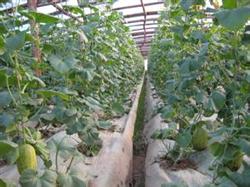
The cultivation experiment of cantaloupe moved eastward shows that it is very easy to cultivate cantaloupe around Beijing. The sandy loam soil with less than 1% salt and 1.5% humus is the best; the temperature is 28-38 ℃, the relative humidity is 15%-70%, the light is 30,000 lux (more than 8 hours a day), and the sea is the best.
2018-09-12 -
Management measures after planting of cantaloupe
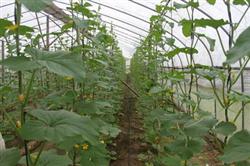
In the past two years, the planting area of Hami melon in Jiading District has gradually expanded, and the planting varieties have been continuously enriched. In 2007, a total of about 60 mu of cantaloupe were planted, and the main varieties were "Xuelihong", "9818" and "Xianguo". At present, the planting of cantaloupe has been basically completed. In order to ensure the normal growth of cantaloupe, it is urgent to catch.
2018-09-12 -
Storage disease of Hami melon: black spot
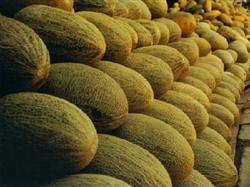
Black spot is one of the main diseases of Hami melon during storage, which mainly occurs in the later stage of storage. The melon surface forms a brown, slightly sunken spot, which gradually expands and blackens, and even becomes irregular. The necrotic flesh under the disease spot is black and spongy, which is easy to separate from healthy meat. The disease matured and aged in cantaloupe, and the disease resistance gradually.
2018-09-12 -
Cultivation techniques of cantaloupe in greenhouse
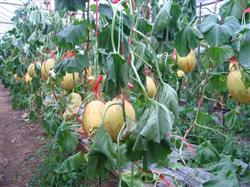
In recent years, cantaloupe has been successfully introduced, demonstrated and popularized in Jiading, and a number of cantaloupe varieties suitable for cultivation in the eastern region have been selected, among which Xuelihong has become the leading Hami melon variety in this area. At the same time, through the "base + farmers" form, cantaloupe has been promoted to the majority of farmers, and has been formed.
2018-09-12 -
Control methods of main diseases of Hami melon
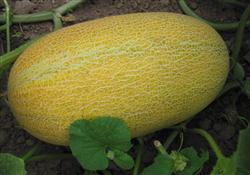
* * the main diseases of Hami melon are Phytophthora, downy mildew and powdery mildew. Bacterial leaf spot, vine blight, virus disease and liedang. The main control measures and pesticides are as follows: first, Phytophthora (dead seedlings, wilt, rotten melon) (1) selection of disease-resistant varieties (2) use 15-20cm (0.
2018-09-12 -
Techniques of grasping whole and strong seedlings in Hami melon planting
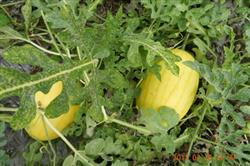
The soil of Hami melon must be disinfected before each crop cultivation in order to kill the bacteria, eggs, insect bodies and harmful substances secreted by the plants themselves. The common methods of soil disinfection are gas disinfection, chemical disinfection, high temperature disinfection, irrigation disinfection and so on. After practice, cantaloupe cultivation land.
2018-09-12 -
Chemical Control of bacterial Leaf spot in Hami Melon
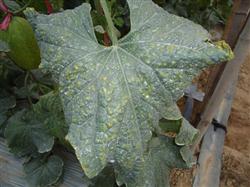
Bacterial leaf spot is an important disease of Hami melon, which can be caused by planting in protected and open fields. the rate of diseased plants in serious plots or greenhouse is more than 80%. The seriously diseased plants are necrotic due to disease, which obviously affects the production. The main symptoms are damage to leaves, and when severe, they also infect stems and fruits. The leaf is infected, it is dark green oil-stained dot at the beginning, with.
2018-09-12 -
Methods and techniques of soilless cultivation of Hami melon
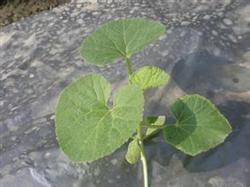
In recent years, the area of anti-season cultivation of Hami melon in Hainan has gradually expanded by using economic greenhouse. Compared with open field cultivation, Hami melon is a kind of cash crop with high input and high output. The seed price of Hami melon is expensive and the disease in seedling stage is more serious. the causes of seedling death of Hami melon are described and the control methods are put forward. ...
2018-09-12 -
Pineapple pink scale
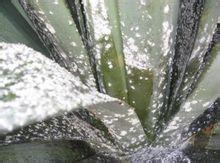
The pineapple pink scale belongs to Homoptera and Coccidae. Pineapple pink scale is the most common. The symptom of damage is that adult and nymph damage pineapple rhizome, leaf, fruit and seedling to suck its juice. The damaged leaves begin to show symptoms from the lower part, gradually fade upward and turn yellow and finally reddish purple, and in severe cases, all leaves soften and droop.
2018-09-12 -
Experience of off-season and high-yield cultivation of pineapple
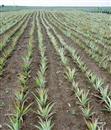
Pineapple cultivation has two rows, three rows and four rows. Double-row type, commonly used borders and grooves with a total of 150cm width, double-row single-plant arrangement. Its advantages are: the furrow is wider, the fibrous root can expand outward, the plant spacing on the border is more uniform, the stem base is squeezed against each other, the leaf extends into a hemispherical surface, it can make full use of sunlight, and it is easy to form between rows.
2018-09-12 -
Growing pineapple in greenhouse in North China
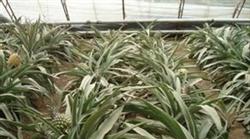
It usually takes about a year for pineapple to blossom and hang fruit. Pineapple is also suitable for planting in flowerpots, which can not only make full use of the space under trees, but also can be sold as bonsai in flower and fruit period, which has high ornamental value and economic benefits. Planting in the north should be carried out in solar greenhouses or multi-span greenhouses with heating facilities. Fall.
2018-09-12 -
Cantaloupe cantaloupe is suitable for protected cultivation in southeastern China.
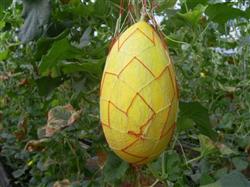
1. Construction of greenhouse production line 1. Greenhouse structure: the greenhouse is made of arched plastic with a longitudinal pipe and four card grooves of 6.5m × 30m. The height of the shed is 3.2m, the height of the shoulder is 2.0m, the distance between the arches is 60cm, and the foot of the shed is inserted into the underground 35cm. A pressing groove is installed at the inflection point of the shoulder height of the greenhouse and at the 20cm of the foot of the shed from the ground.
2018-09-12 -
Opinions on cultivation of Hami Melon in Autumn
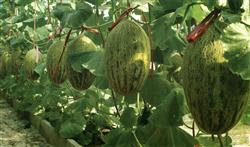
1. Field preparation: the selection of cantaloupe in autumn should be far away from greenhouse, melon and vegetable fields, and should be cleaned, fertilized deeply, ditched and ridged, etc. two。 Sowing seedlings at the right time: we should not only avoid high temperature, typhoon, rainstorm and other disastrous weather, but also pay attention to the temperature requirements in the later stage of cantaloupe growth and development. It is appropriate.
2018-09-12 -
It is the right time to apply potassium to pineapple
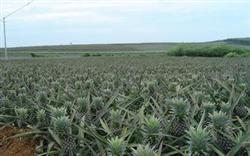
At present, the pineapple winter fruit has entered the rapid expansion and color-changing maturity period, and there is a large demand for potash fertilizer. if the potash fertilizer supply is sufficient, the pineapple winter fruit can expand rapidly and fully mature, the fruit is large, the fruit shape is correct, the fruit is full, the pulp is sweet, the fruit juice is rich, the aroma is strong, the color is good, the pericarp is golden, and it is resistant to storage and transportation. No.
2018-09-12 -
Pineapple fertilizer should pay attention to nitrogen and potassium supply
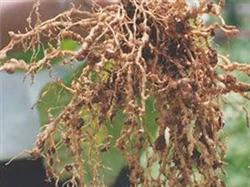
Because root nematode parasitism in the root, and make root tissue excessive growth, the formation of different sizes of tumors. Control methods: quarantine, can not carry nematodes with the plant, to no disease area. When opening up new orchards, plowing and drying the soil in sunny weather can also kill root nematodes by sunlight.
2018-09-12 -
Control of pineapple pink scale
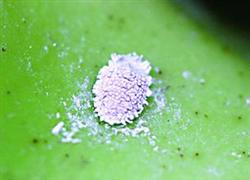
The scientific name Dysmicoccusbrevipes (Cockerell) of pineapple pink scale belongs to Homoptera, Coccidae. Pineapple pink scale is the most common. The symptom of damage is that adult and nymph damage pineapple rhizome, leaf, fruit and seedling to suck its juice. The damaged leaves begin to show symptoms from the lower part, gradually fade upward and turn yellow at last.
2018-09-12 -
Conditions for creating pineapple orchards
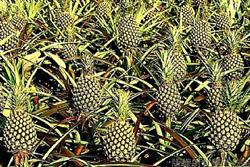
During the growth and development of pineapple, the water solution of 300 times potassium dihydrogen phosphate was irrigated continuously for 8 times every 15 days, each time 1.5 × 2 kg per plant, through the trumpet mouth at the top of the pineapple plant. Let the aqueous solution of potassium dihydrogen phosphate flow along the leaf axil to the soil around the root. In this way, the pineapple plant growth is robust, the leaf is big.
2018-09-12 -
Key points of fertilization Management in Pineapple Orchard
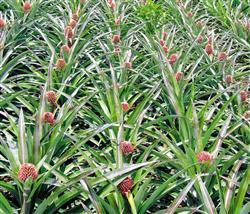
Mineral nutrition in soil is the material basis of pineapple plant vegetative growth and reproductive growth. Soil fertility, fertilization amount, fertilizer quality and fertilization technology are one of the important factors that directly affect the normal growth and high yield and stability of pineapple plants. Pineapple is a kind of perennial herbaceous fruit tree with a harvest of 2-3.
2018-09-12
